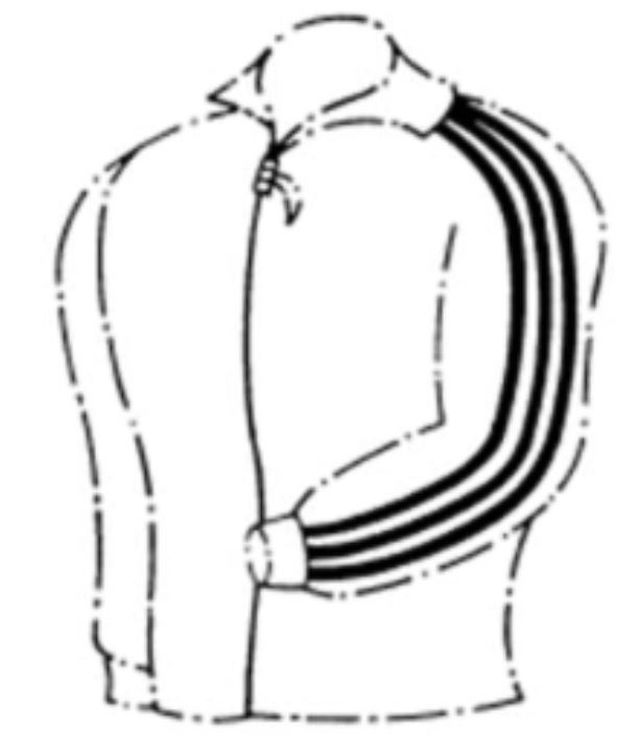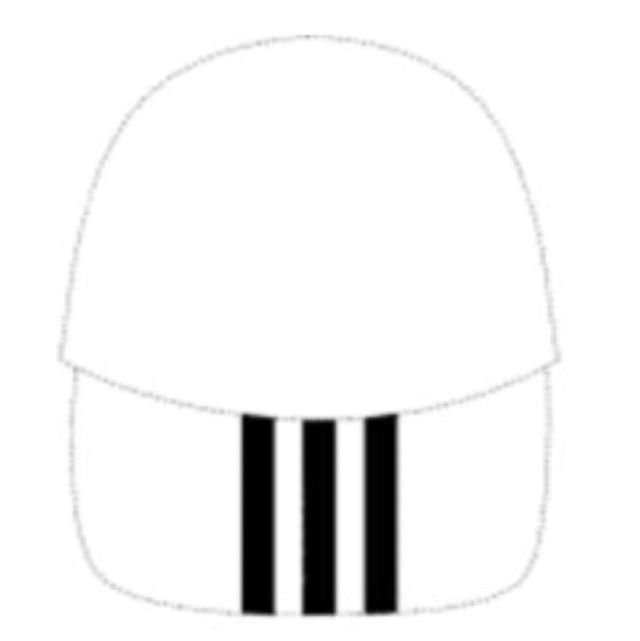- in European Union
- in European Union
1. Thom Browne v Adidas
Last month, in the first decision in relation to 'position' marks, the English Court dismissed Adidas' claims for trademark infringement and passing off by Thom Browne. The judge also held that eight of Adidas' 'three stripes' trademarks were invalid as they lacked identification requirements, such as precision and clarity which fall under section 1 of theTrade Mark Act (the Act).
Adidas also brought claims for trademark infringement in the US and in Germany against Thom Browne. However, these were unsuccessful.
Adidas uses a design consisting of three parallel, straight stripes of equal width and spacing to identify its brand on its clothing. Thom Browne uses a design consisting of four equally spaced stripes of equal width on garments. Both designs are shown below.

Thom Browne sought to invalidate 16 of Adidas' three stripe trade marks registered for a range of clothing, footwear and related accessories in the English Court. The judge considered whether Adidas' UK trademark registrations satisfied the identification requirements for registrability of a UK trademark, which include clarity, intelligibility, specificity, precision, accessibility, uniformity, self-containment, and objectivity.
The judge considered the written description as well as the graphical representation and held eight of the 16 challenged marks to be invalid. For example, Adidas' trademark registered for a tracksuit top is shown below:

The registration included the written description: "The mark consists of three parallel equally spaced stripes applied to an upper garment, the stripes running along one third or more of the length of the sleeve of the garment". The judge held that there could be several variations in the stripes, such as their length, where they began or ended, which were not clarified.
Where the graphical representation and the written description were clear, such as for Adidas' cap mark, as shown below, the judge held the marks to be valid.

'The mark comprises three stripes applied on a cap visor, as shown in the illustration, the shape of the cap as such does not form part of the mark'.
While the judge's infringement analysis included consideration of the similarity between Adidas' marks and the sign, the Judge considered that the average consumer would appreciate the difference between the three stripes and four stripes and held that there was no likelihood of direct or indirection confusion and therefore, no infringement under section 10(2) of the Act.
The judge also dismissed Adidas' infringement claim under section 10(3) of the Act and the passing off claim.
2. Sky v Skykick—Supreme Court
Following litigation which began eight years ago in the English court in the pre-Brexit era—and six judgments including a judgment from the Court of Justice for the European Union (CJEU)—the Supreme Court handed down its decision.
This overturned the Court of Appeal's ruling and provided guidance on 'bad faith' trademark filings last month.
Sky is a well known satellite and television broadcaster and had a strategy for filing broad trademark applications. For example the word 'Sky' was registered in up to 22 NICE classifications, including for 'whips' and 'bleaching preparations'.
Sky sued Skykick for trademark infringement for the use of the word 'Skykick' and Skykick logos in relation to cloud migrations services.
Sky relied on the below selected goods and services in its infringement claim:
- computer software (Class 9);
- computer software supplied from the internet (Class 9);
- computer software and telecoms apparatus to enable connection to databases
- and the internet (Class 9);
- data storage (Class 9);
- telecommunications services (Class 38);
- electronic mail services (Class 38);
- internet portal services (Class 38); and
- computer services for accessing and retrieving information/data via a computer
Skykick counterclaimed that Sky's registrations had been applied for in bad faith because Sky had no intention of using them in relation to all of the goods and services for which they were registered.
Following a reference to the CJEU, whose decision is binding on UK courts, it held that:
"A trademark application made without any intention to use the trademark constitutes bad faith, if the applicant had the intention either of undermining, in a manner inconsistent with honest practices, the interests of third parties, or of obtaining, without even targeting a specific third party, an exclusive right for purposes other than those falling within the functions of a trademark."
The High Court found that Sky had not intended to use the Sky marks in relation to some of the goods and services, and that there was no foreseeable prospect that they would ever use the marks in relation to certain goods and services.
The court also found that Sky had applied for the marks with the intention of obtaining an exclusive right for purposes other than those falling within the functions of a trademark and to use them as a 'legal weapon' against third parties. The High Court therefore limited Sky's specification based on evidence presented in relation to the selected goods and services relied on for infringement.
The Court of Appeal overturned the High Court decision on its bad faith filings taking a far more lenient approach to trademark proprietors.
The Supreme Court overturned the Court of Appeal and restored the decision of the High Court. The Supreme Court noted that Sky's trademark specifications were very broad, covered a large number of classes using class headings and that Sky had not disclosed documents which justified their reasons for seeking such broad protection in its evidence. The Supreme Court also noted that Sky had relied on around 800 'positive' decisions around the world in which it had been successful. For example, Sky had relied on its marks in goods and services it did not trade in to successfully oppose the application for the mark 'LittleSky' for animal skins and footwear at the EUIPO.
Trademark practitioners will follow the application of this decision by the UK Intellectual Property Office and the UK courts with keen interest. While it is likely that invalidation attacks for 'bad faith' may become more common, the impact of a specification which is only cut back to reflect the scope of the holder's commercial interests following a finding of 'bad faith' is unlikely to act as a huge deterrent.
3. Lifestyle Equities v Amazon—Supreme Court
Lifestyle Equities claimed that Amazon infringed UK and EU trademarks by offering for sale and selling US branded goods in the UK by enabling a UK consumer to purchase US branded items from the Amazon.com website.
The current case law establishes that mere accessibility of a website by a consumer in the territory (UK or EU) is not sufficient to give rise to an infringement of trademark rights. In order to 'use' a sign, the infringer has to go further and 'target' the consumer in the UK. One of the main issues in this case was whether Amazon.com had targeted the UK consumer.
The factual position was that the purchaser was located in the UK, the shipping and billing addresses were in the UK, the currency was in British sterling, Amazon made all the necessary arrangements for the goods to be shipped and imported into the UK and then delivered to the UK consumer.
The Supreme Court upheld the Court of Appeal's decision that Amazon was liable for trademark infringement because of the way they advertised and offered goods to UK and EU consumers. The Supreme Court was influenced by factors such as the landing page on Amazon.com which stated: 'Delivered to the United Kingdom', and the webpages which specified particular goods could be shipped to the UK and those which could not be shipped to the UK.
These factors were assessed against the factors which favoured Amazon's position that no targeting had taken place, such as a message on the webpage in relation to the use of the UK website instead of the US website and the default prices being displayed in US dollars with an option to change the currency.
The guidance provided in the decision is useful to platform providers who can take steps to avoid claims for infringement. The decision has clarified that "whether or not there has been targeting in the relevant sense depends upon what is done up to the moment of the conclusion of the contract of sale, not thereafter".
Originally published by World Intellectual Property Review .
The content of this article is intended to provide a general guide to the subject matter. Specialist advice should be sought about your specific circumstances.

